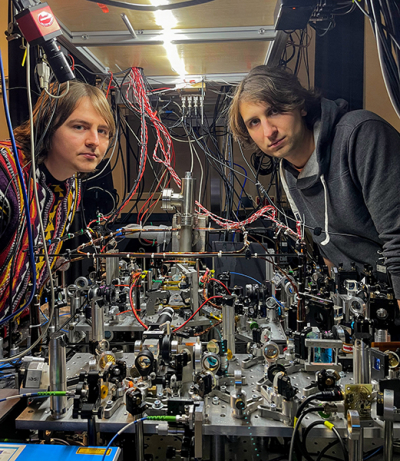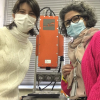
Several years ago, physicists from the Centre for Quantum Optical Technologies and the Faculty of Physics of the University of Warsaw designed and built the first quantum memory in Poland, which was further developed into a quantum processor. “Our processor is based on a cloud of cold atoms. They can efficiently store and process information from light”, describes Dr Michał Parniak, leader of the Quantum-Optical Devices Laboratory. They have used the device as part of a super-resolution spectrometer.
“Our device and algorithm allow us to not only gather information from light more efficiently, but it could also improve ‘cramming’ information into light”, says Dr Parniak. He notes that this idea could be used in telecommunications as well, where more efficient data storage and processing in light is becoming essential. Although there have been efforts to circumvent the Rayleigh limit in spectroscopy, the researchers of the University of Warsaw have demonstrated how to do this in a completely unconventional way—with the use of solutions from quantum information science. Because where classical physics can’t cope, quantum physics sometimes offers a whole spectrum of possibilities.
Physicists of the University of Warsaw have built a device that can achieve a resolution in spectroscopy of 15 kHz, or forty parts per trillion, by using a small amount of light from a particular object. “Our spectrometer beats the classical limit using 20 times less photons than the hypothetical traditional spectrometer”, says Mateusz Mazelanik, “But this is a remarkable achievement because a classical device with a similar resolution doesn’t actually exist.”
The processor, which was built at the University of Warsaw, uses a cloud of several billion cooled rubidium atoms placed in a vacuum field, in order to carry out calculations. If the atoms are placed in a magnetic field and illuminated with a laser, they can be controlled to perform particular logic operations, such as process information on the spectrum of light that they are illuminated with. Quantum effects are used in the calculations, so calculations in the “cold atomic cloud” don’t substitute conventional binary calculations, but add a new level of quality.
“We came up with the idea of how a quantum processor could be used to solve particular problems in spectroscopy”, says Dr Michał Parniak. And he emphasises that, up until this point, finding practical applications for quantum processors and designing devices like these with unique solutions in mind wasn’t at all obvious.










